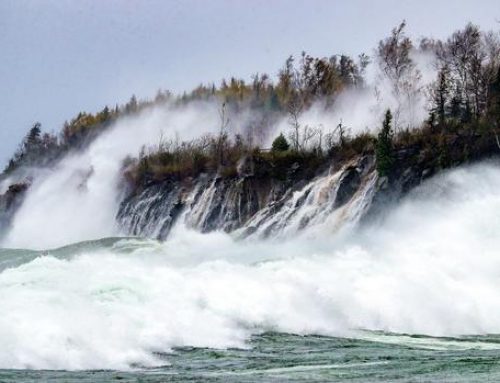Muck is by far the toughest obstacle to overcome in any lakefront situation. It can prevent you from ever leveling your boatlift, creating a stable walking surface on your dock and is very unpleasant to swim around or step into. Muck can force people to resort to floating dock options, floating lift options, or forgo and dock or lift all together. There are so few options of how to beat back muck and work around it but there are a couple ways in which to minimize the headache it can cause. From oversized base pads, muck mats and sweeps, there are a few avenues for people in extremely soft bottom situations to take advantage of.
The first and cheapest option is to enlarge the size of the base pads you are using on your dock or boatlift as to expand the surface area the system is resting on, this distributes the weight of your equipment more evenly and helps from excess sinking to occur. In many situations, a base pad that is 8″ x 8″ is just not going to be large enough to not continually sink further down into the mud and silt. Upgrading to a larger 12″ x 12″ base pad or even a 16″ x 16″ pad can greatly improve a docks stability and prevent sinking.
Lifts are often even harder to make level and stable because of the incredible weight they must hold from the boat being placed and raised on them. Often the standard base pad on most lifts just does not provide enough surface area to prevent excess sinking and requiring a team of guys to constantly come out to your lakefront and attempt to re-level the lift over and over, that process can be extremely expensive. In this situation, it is recommended that you purchase some 2″ x 12″ x 16ft pieces of treated lumber to create a larger base pad for the lift. Cut the lumber into 2ft lengths and place two side by side the two more on top in the opposite direction, creating a square and secure them together with heavy wood screws. Next drill one small hole near the front and rear of each of you metal base pads, put the wood pad centered below the metal foot of the lift and attach the base pad to the wood pad with more wood screws through the holes you drilled. You have now created a pad with 4 square feet of surface area below each foot and this technique always works for keeping a lift level even in the most extreme muck situations. Before replacing your entire dock or giving up on your freestanding lift dreams, try these techniques first and you may save yourself an expensive transition into floating systems.
Your last, best, and most expensive option is using muck blaster. These systems are mounted to the dock you have, can free float tied down in your swimming area or freestanding on the lake bottom. These sweeps push an incredible amount of water constantly along your lakefront. They utilize the concept of aeration and current to naturally remove silt, muck, weeds and rotting debris from the surface and bottom of the water column. This action, over time, creates a clean and clear lakefront for your property. AquaSweeps can clear an area 50 – 100ft around of all the types of mucky mess and debris we all dislike so much to swim around and install lifts and docks in. Removing these types of material from your lakefront clears the water column, eliminates odors or rotting marine debris and creates a healthy home for aquaculture by preventing extreme stratification where access sediments pose issues. Simply mount a muck blaster to your dock, turn on the oscillation feature and watch the system move the water in every direction and before you know it your lakefront will be clear. After some time the light layer of silt on the lake bottom under your dock and lift will be blown away by the HydroSweeps current and the harder bottom will be available to install your dock and lifts on, finally giving you a solid surface to work with.
Muck is a part of many inland lakes, rivers and canals. With everyone trying to have the biggest and best boat lift and dock systems on their property no matter how bad the bottom is on their lakefront, things like AquaSweeps and HydroSweeps are going to become ever more popular and necessary for keeping these areas workable and ready for installation and play time.










